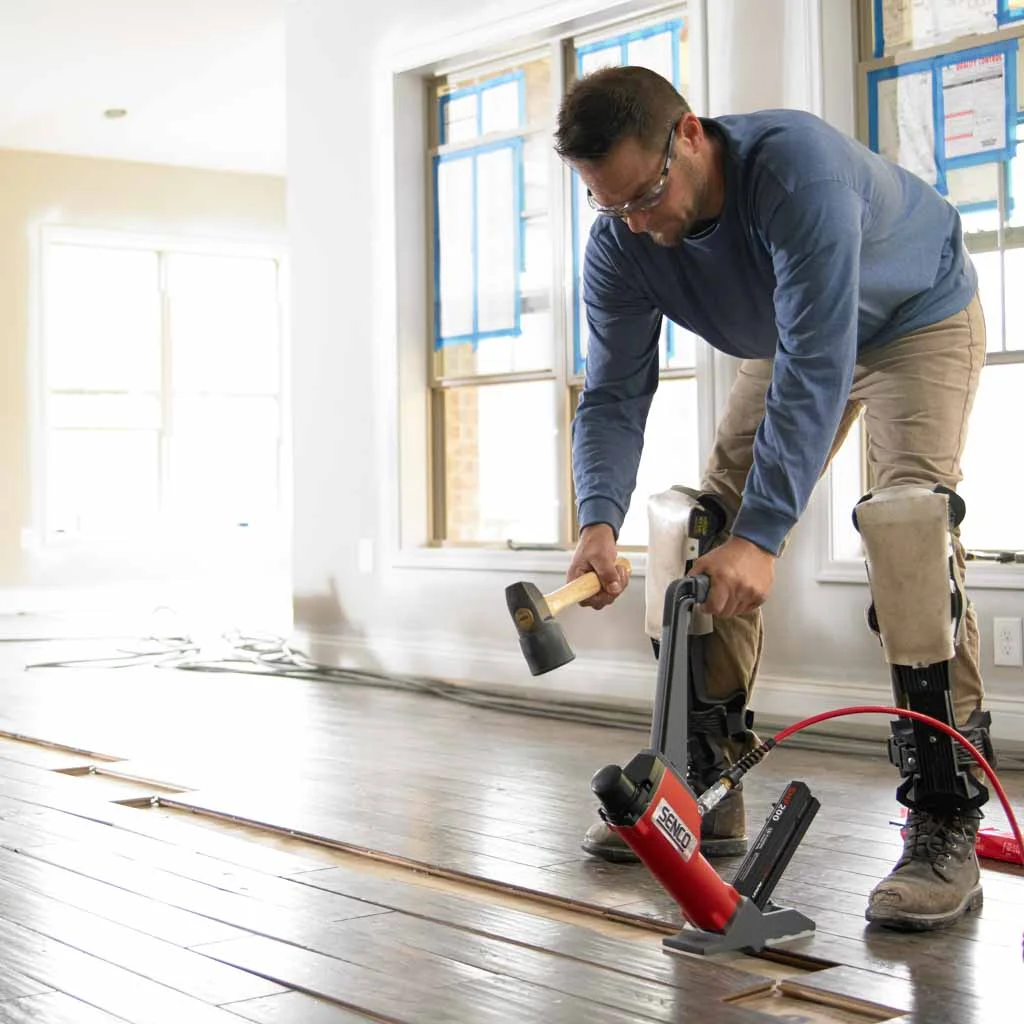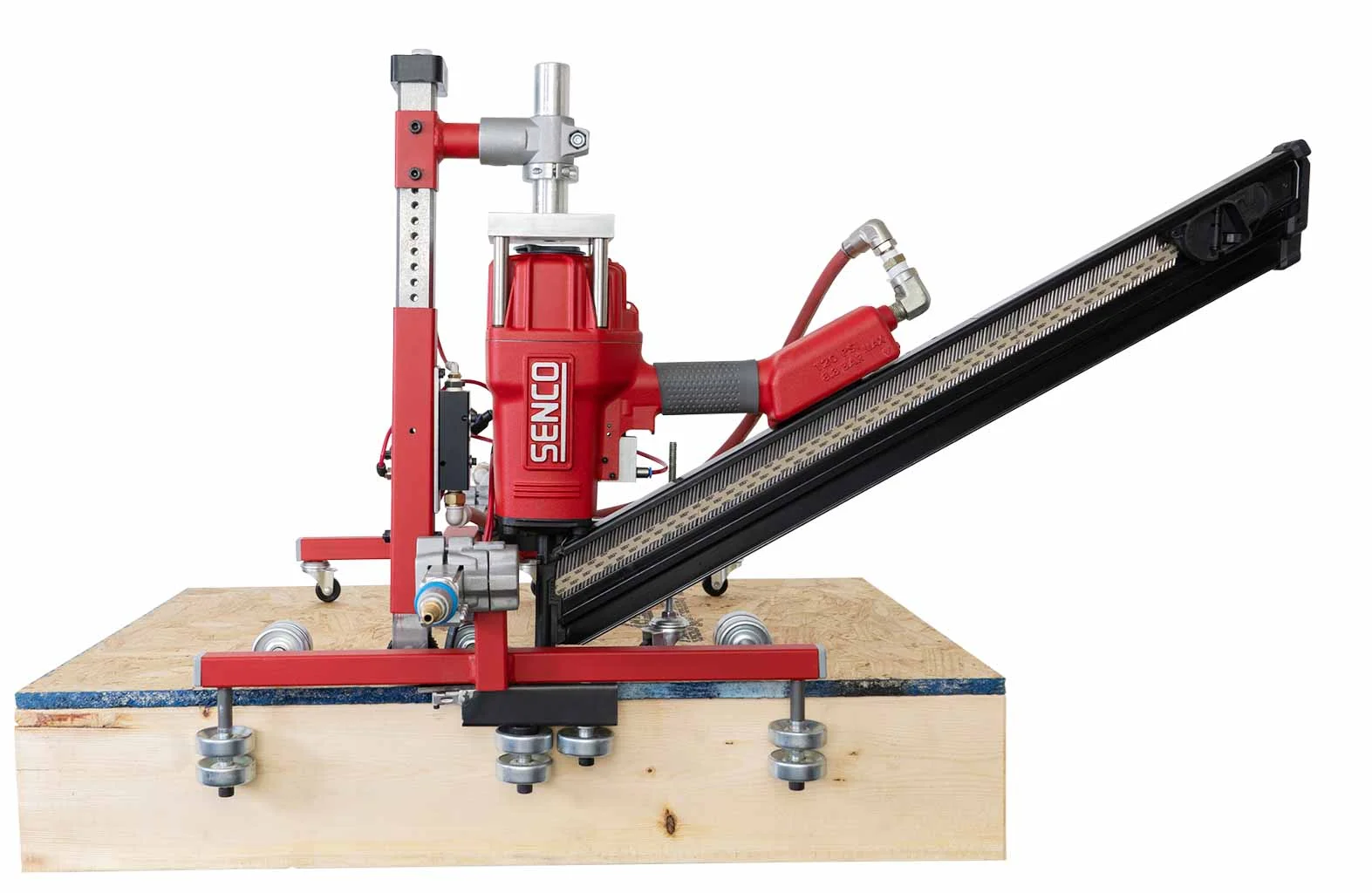Storing Pneumatic Tools: The Do’s and the Don’ts

Pneumatic nailers and staplers are often the most expensive tools in a toolbox or workshop. Because they are specially designed and built for the toughest work – and powered by compressed air – they require special treatment to maintain their performance over a long lifespan. Here are a few “do’s” and “don’ts” for proper pneumatic tool storage.
Do Clean Pneumatic Tools Before You Store Them
Dirt, debris and oil build-up can cause wear that leads to damage of pneumatic nailers and staplers. To minimize the likelihood of this happening, wipe down tools with a clean cloth after each use, paying special attention to the feed system. If you use a cleaner, make sure it’s formulated for your brand of nail gun or stapler or it may damage critical parts. For removing dirt and grime on the exterior, use no more than a mild solvent.
Do Store in a Cool, Dry Place
As mentioned above, moisture and high humidity associated with extreme temperatures are not good for pneumatic nailers and staplers and their internal components. Another good practice is to store them away from the elements, so they’re not exposed to extremely warm or cold temperatures over a sustained period of time.
Do Use Racks or Cases that Keep Tools Out of Harm’s Way
Hanging pneumatic nailers and staplers on wall racks or storing them in cases is the best way to keep them away from moisture or unnecessary bumps or other physical damage. There are a variety of rack holders and storage boxes available online for the weekend warrior to the large construction contractor or industrial user. Many SENCO tools come with a protective case. Whichever option you choose, it’s important that pneumatic tools be stored in a way that protects them from unnecessary harm.
CHECK OUT A NEW TOOL RACK CONCEPT
Do Lubricate Regularly
Prior to lubricating your tool, SENCO recommends consulting the operating manual to learn the proper maintenance procedures. Certain tools, such as SENCO’s NeverLube® line, feature self-lubricating components and do not require regular oiling. Applying lubricants to these tools can damage internal components, leading to costly and time-consuming repairs.
Because pneumatic tools are powered by compressed air, moisture can accumulate and condense in internal passageways and on seals, causing rust and corrosion over time. To counter this, consider putting a few drops of oil down the air inlet before storing your pneumatic nailers and staplers with the air inlet uppermost. Run the tool briefly to distribute the lubricant. But watch which lubricant you use. (see below)
In addition to these “do’s” for properly storing tools, here are a few “don’ts”
Don’t lubricate nails guns and staplers with just any off-the-shelf product
Petroleum-based oils are a no-no as they can damage rubber-based tool parts, such as O-rings. WD-40 is not recommended for the same reason. Most manufacturers, including SENCO, offer proprietary lubricants, specifically designed for their product – and even solutions for especially harsh environments such as high-moisture areas.
Don’t leave pneumatic tools connected to their air supply
Always disconnect the air compressor from your pneumatic nailer or stapler when the tool is not in use. This will prevent accidental activation, pressure build-up, and potential damage. Also, secure any tool attachments such as bits, couplers and plugs.
Don’t carelessly coil air hoses
Storing a pneumatic tool air hose improperly can cause loops, tangles, kinks and, ultimately, sub-optimal air pressure with future use. The proper way to coil an air hose is to make one regular coil and take the next coil and put a half-turn in it and repeat until done. You might also want to consider a hybrid air hose for maximum flexibility and durability.
HOW TO PROPERLY COIL AIR HOSES
By following these simple do’s and don’ts, you can keep your pneumatic tools operating at peak performance and extend their working life.

